Imagine trying to survive outside all day in 100 degree heat without a bottle of water. It wouldn’t take you very long to start fading.
You need water to function, to survive.
Your car works in much the same manner.
Without the proper fluids, your car would quickly grind to a halt. It would perform only as good as it could, trying to pull what it needs from the various resources. Until nothing was left. The only choice it has is to quit functioning altogether.
Coolant is an important fluid your car needs to function year round, but especially in the summer months. Coolant is designed to prevent water in your radiator from boiling over. In the summer months, your vehicle can reach much higher temperatures, especially as you drive under the extreme heat we face here along the Rocky Mountains. Coolant also provides lubrication for all the moving parts it comes into contact with, keeping seals and gaskets supple, so they are less likely to harden and leak.
Coolant, also known as antifreeze, is one of the most important fluids to keep your car running properly. If you’ve noticed an odd, sweet smell after turning your engine off, you might have a coolant leak.
While the term antifreeze might have you thinking it’s only used in the winter months when temperatures fall below freezing, antifreeze is equally important in the summer months for your cooling system. Coolant – antifreeze – control’s the engine’s temperature so it won’t overheat.
A car’s radiator is filled with coolant, which is a mixture of 50 percent antifreeze and 50 percent water. The engine pumps coolant through the radiator, engine, and heating system to help keep your engine operating at the proper temperature, regardless of how high or low the temperatures climb.
When an engine starts running low on coolant, it causes the radiator to run too hot, which hurts both performance and fuel economy. If allowed to operate too long in this condition, your engine can overheat, which will damage 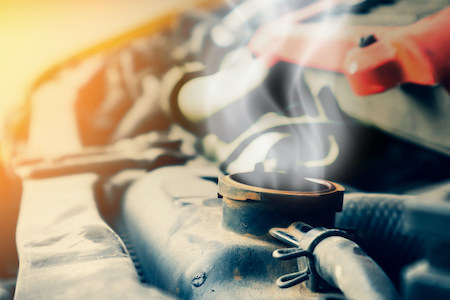 your car, possibly bringing it to a halt. If it destroys your engine, it will be a complete replacement, a costly endeavor at best.
your car, possibly bringing it to a halt. If it destroys your engine, it will be a complete replacement, a costly endeavor at best.
If you have a cooling system leak, it’s important to discover it as quickly as possible, and get it fixed. The cooling system has many different parts, something a good mechanic will know how to search out. A coolant leak could be something as simple as tightening a loose clamp, or as complicated as repairing or replacing a broken water pump. Bringing it in will allow a technician to diagnose the problem and fix it quickly to have you back on the road in no time.
How to tell if you have a coolant leak
In most cases, you’ll know if you have a cooling system leak in one of three ways.
- If you notice a sweet aroma from outside your vehicle, or immediately after you turn your car off after you’ve driven it.
- Look for puddles of liquid underneath your car. They are either lime-green, orange, pink, or blue-green in color. Different antifreeze manufacturers create different dye lots to help differentiate coolant from other fluids your vehicle uses. For example, engine oil is gold when new or a dirty brown or black as it’s used. Transmission fluid is a deep red color. This is one reason to park in the same spot regularly, and pay attention to what lies underneath when you drive away.
- Your car starts overheating. You may also notice the temperature gauge moving towards the hot zone as you drive.
Reasons for a cooling system leak
Once you’re sure you have a leak in the cooling system, you can start to pinpoint where the leak originates. There are a variety of ways coolant can begin leaking, here are several of the most common.
You have a leaky radiator cap – the radiator is an extremely pressurized environment. If the radiator cap isn’t tightly sealed, it won’t keep the cooling system at the right pressure level. Over time, this seal can begin deteriorating or the spring may wear out, causing coolant to leak.
Your head gasket blows – the head gasket plays an important role in the engine’s performance. When a head gasket blows, it may take time before you notice a problem. The head gasket manages a wide range of temperatures, and runs with both high and low pressure within the engine. It sits between the engine block and the cylinder head, and is referred to as “blown” when it develops a leak. The engine will no longer keep the oil and coolant separate once this happens, and ultimately leads to engine failure. It can also allow the coolant to leak and drop to low levels, which impacts the ability to cool the engine down.
Your radiator has a hole – the radiator endures both low and high extremes as you drive throughout the year. That constant temperature change takes its toll over time. Corrosion within the radiator is one of the main reasons for problems with leaks. As it ages, it gets weaker, allowing sediment or debris inside. This can spring tiny holes that lead to leaks.
Your water pump – the water pump is one of the key parts that ensures coolant is being circulated throughout the cooling system. It’s driven by a belt and is located in the lower part of the engine, connected by a hose to the radiator. This hose can break or become separated, or suffer damage over time. If coolant isn’t moving throughout the system, your engine will eventually overheat.
How to avoid cooling system problems
One of the easiest ways to avoid coolant leaks is to follow a regular maintenance schedule. That means changing out the coolant in your radiator according to manufacturer’s guidelines.
Older coolant can become sour, become acidic, and start eating away at the internal parts. Regular maintenance detects problems with hoses and connection, and finds tiny leaks throughout the cooling system before they become bigger problems.
No matter what problem you notice, whether it’s a smell, a noise, or moisture underneath your vehicle when you drive away, the best way to fix a problem is to bring your car in quickly and stop the problem in its tracks.
Let us help keep your car in good working condition this summer. It’s the best way to help you stay on the road, and avoid an overheating engine on one of the hottest days of the summer.


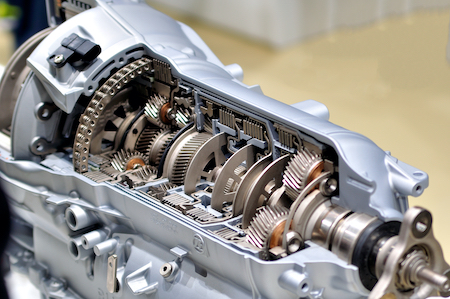 Another thing you might notice is that your vehicle’s transmission tends to impulsively slip in and out of place. This can be highly dangerous if you’re on a busy road and your gears slip. Imagine flying down the highway from a day up skiing, and your gears slip to neutral. If you feel this at any point, bring it in to have it evaluated as soon as possible.
Another thing you might notice is that your vehicle’s transmission tends to impulsively slip in and out of place. This can be highly dangerous if you’re on a busy road and your gears slip. Imagine flying down the highway from a day up skiing, and your gears slip to neutral. If you feel this at any point, bring it in to have it evaluated as soon as possible. When your wheels are in proper alignment, the entire suspension system is working together, keeping you pointed in the right direction. Without movement, you move in a straight line. But when wheels are out of alignment, that balance can shift and turn. Have you ever felt a pull to the right or left when you’re moving down an open stretch of highway? That’s a problem with your wheel alignment. It can cause other systems more wear as you overcompensate for the problem.
When your wheels are in proper alignment, the entire suspension system is working together, keeping you pointed in the right direction. Without movement, you move in a straight line. But when wheels are out of alignment, that balance can shift and turn. Have you ever felt a pull to the right or left when you’re moving down an open stretch of highway? That’s a problem with your wheel alignment. It can cause other systems more wear as you overcompensate for the problem.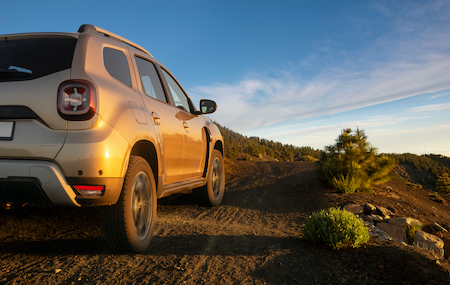 Car trouble is bad anytime it happens. But when your car doesn’t start in the office parking lot, it’s a minor inconvenience. If your car dies on the open road, it can be downright dangerous.
Car trouble is bad anytime it happens. But when your car doesn’t start in the office parking lot, it’s a minor inconvenience. If your car dies on the open road, it can be downright dangerous.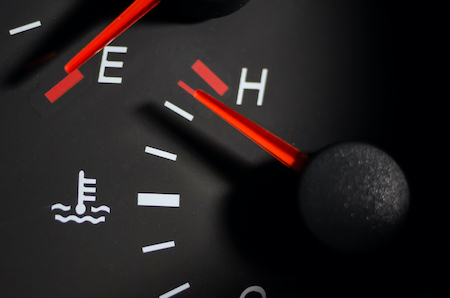 The cooling system includes the radiator, thermostat, coolant, and a variety of hoses that circulate the antifreeze where it’s supposed to go. It absorbs the heat as it operates, carrying heat away from the engine and into the radiator where a fan works to cool it down. The thermostat regulates this process, controlling just how much coolant is needed to flow through the system and keep it working.
The cooling system includes the radiator, thermostat, coolant, and a variety of hoses that circulate the antifreeze where it’s supposed to go. It absorbs the heat as it operates, carrying heat away from the engine and into the radiator where a fan works to cool it down. The thermostat regulates this process, controlling just how much coolant is needed to flow through the system and keep it working.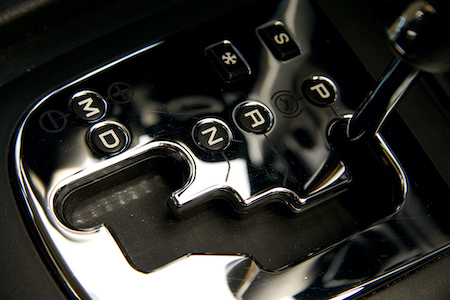 When your gear shifter is stuck, the first rule of thumb is not to force it into action. To do so may cause further damage to your transmission.
When your gear shifter is stuck, the first rule of thumb is not to force it into action. To do so may cause further damage to your transmission. Your serpentine belt is powered by the engine as it turns. Your alternator, air conditioning compressor and power steering pump depend on your serpentine belt in order to run. On some vehicles it also runs the water pump, radiator fan and power brakes.
Your serpentine belt is powered by the engine as it turns. Your alternator, air conditioning compressor and power steering pump depend on your serpentine belt in order to run. On some vehicles it also runs the water pump, radiator fan and power brakes.
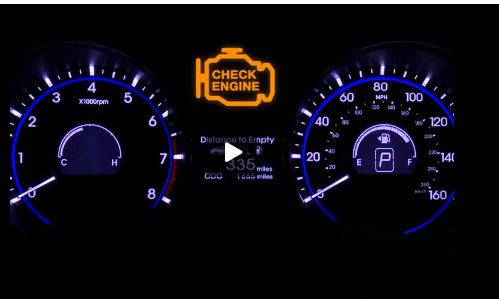 When your check engine light comes on, you may be torn between utter panic and just wanting to ignore it and hope it goes away. That’s perfectly understandable. That same check engine light could come on for anything from a serious engine or transmission problem all the way down to a loose gas cap.
When your check engine light comes on, you may be torn between utter panic and just wanting to ignore it and hope it goes away. That’s perfectly understandable. That same check engine light could come on for anything from a serious engine or transmission problem all the way down to a loose gas cap.